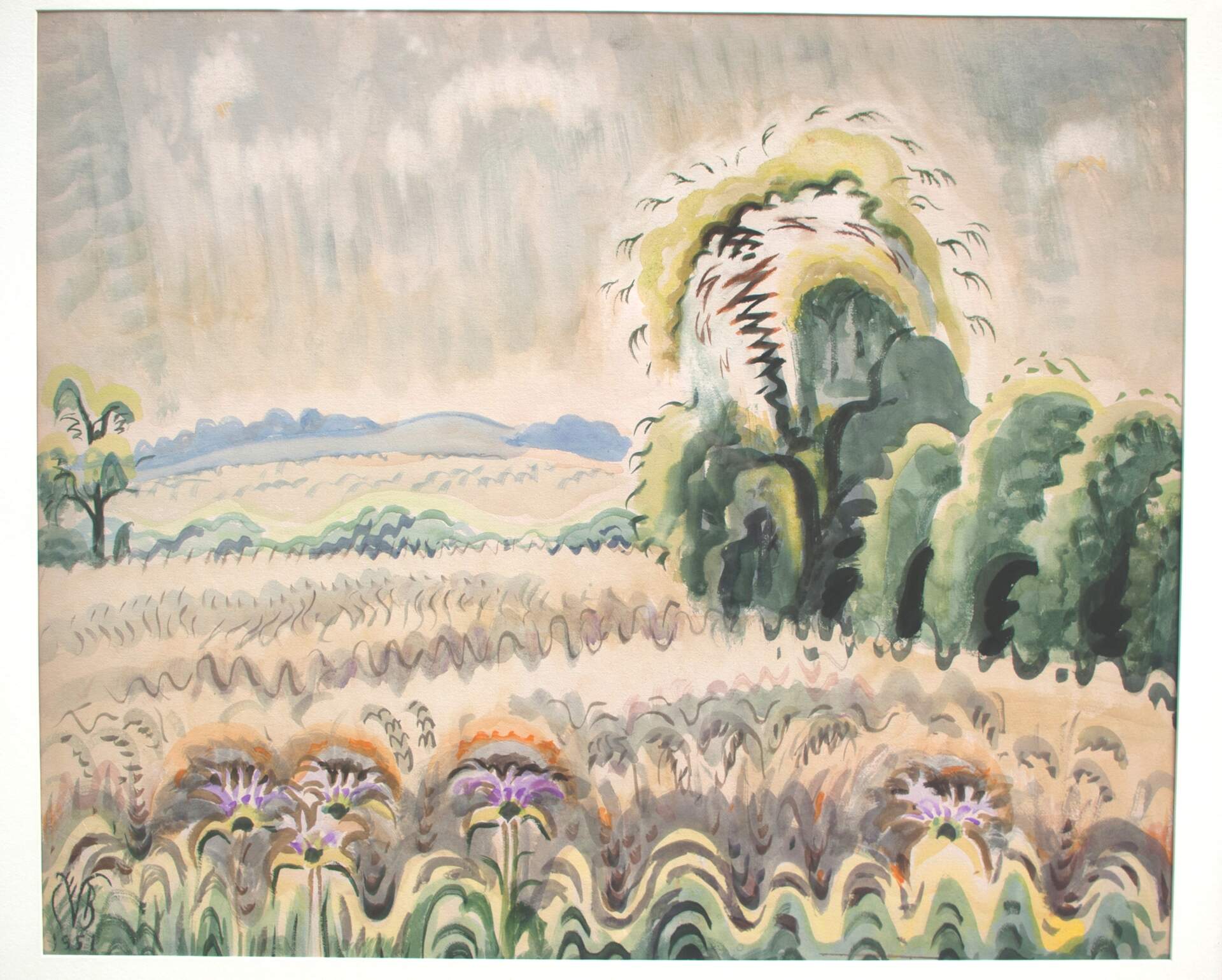
Charles E. Burchfield: Weather Event
Presented by LPCiminelli with support from the Charles E. Burchfield Foundation Inc.
Past
Oct 28, 2011 - Feb 26, 2012
Weather Event focuses on Charles E. Burchfield’s depictions of the weather south of Lake Erie, where the artist lived for most of his life. Individual weather events are examined through both an artistic and scientific lens.
Burchfield's representations of weather, wind, skies and sounds are unique historical records of the environment near Lake Erie. In 1915, Burchfield made a series of sketches that show the changing weather and position of the sun over the course of several hours, which he called all-day sketches. Decades later, a 1950 journal entry recounts "The Day the Sun Disappeared over Western New York." In these unique instances and others the visitor experiences the landscape through Burchfield's eyes. Working with climatologist and Buffalo State College professor Stephen Vermette, Ph.D., we present the dramatic and complex natural phenomenon chronicled in more than 50 years of Burchfield's writings, drawings and paintings.
Daily weather maps provided by the National Oceanic and Atmospheric Administration (NOAA) are on display in the galleries that illustrate the actual weather on the days when Burchfield’s works were made. As part of the exhibition, a panel discussion will include broadcast meteorologists from major news channels in Buffalo. The event will be moderated by Vermette with an introduction by curator Tullis Johnson. Vermette and Johnson also worked with broadcast meteorologists and students from Buffalo State College to recreate historical weather forecasts based on this information. These forecasts are accessible in the galleries through the use of smart phone technology and on a display screen in the museum’s Collection Study Room.
The exhibition is accompanied by a catalog with contributions by Johnson and Vermette. The publication includes color illustrations of works on view for the first time. A Gallery Guide was designed by the education department and is available for free in PDF form. This guide includes lesson plans, activities, and other resources for teachers, students, and families to use before and during their visit. In addition, the museum will offer workshops in conjunction with Weather Event.
LAKE EFFECT: HOW IT DEFINES BUFFALO’S WEATHER & CLIMATE
Select Audience Questions & Answers from the Panel Discussion
At The Burchfield Penney Art Center — January 29, 2012
1. What are the dynamics of waterspouts in winter?
Over our lakes, waterspouts are most often seen in the late summer and fall, when air (cold) and lake temperatures (warm) are at their greatest difference. Fair-weather water spouts (differentiated from the tornadic variety) usually occur under developing cumulus clouds during light wind conditions. They build from the surface of the water to the cloud base, as rising air currents of moist air. The spin is attributed to a changing shear (wind direction) with height. Given these conditions, waterspouts in winter would be less common and even rarer when the lake is frozen. Having said this, recent observations by the folks at SUNY Oswego found numerous cases of tiny velocity couplets embedded within lake effect bands – like mini-mini supercells. Perhaps winter waterspouts are more common than originally believed. They are snow- and steam fog-wrapped rather than water-wrapped - the term ‘snowspout’ may be an appropriate term here. Contrary to popular belief, waterspouts do not suck up lake water, rather the waterspout is made up of condensing water vapor.
2. Global warming has been occurring since the last ice age. It seems to be occurring more quickly since the industrial revolution. Is this rate increase due primarily to increased CO2 levels? Are there any other significant causes?
There are numerous cycles of warming and cooling that have taken place on this planet. As you mentioned, the ice age is an example of a cycle between glacial (cold) and inter-glacial (warm) periods that stretch back millions of years. We are currently experiencing an inter-glacial period. More recently, historians refer to the ‘Medieval Climate Optimum’ (warmer) where we learned of the Vikings’ travel to Greenland and the ‘Little Ice Age’ (cooler) that followed. While not a true ice age, the cooling temperatures of the Little Ice Age had a devastating effect on crops. Washington Crossing the Delaware is a painting that shows far more ice on the river than possible today. Since the Industrial Revolution, global temperatures have been increasing, and this increase has been attributed to greenhouse gases, including CO2. While there are some natural explanations for increasing temperatures (e.g. increase in solar output -referred to as natural forcing), they cannot account for the level and pace of warming we are experiencing today.
3. We know that CO2 is a greenhouse gas. Is water vapor a greenhouse gas as well?
Yes, water vapor is a greenhouse gas. Water, along with the other greenhouse gases, in a process known as the ‘Greenhouse Effect,’ keeps our planet at a livable temperature (average surface temperature of about 60oF). Without the greenhouse gases and the Greenhouse Effect, the average global temperature would be at about 0oF.